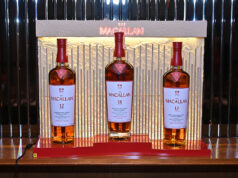By Jasmine Agnes T. Cruz
Exhibit
A Glass of the Sea: An Exhibition on the Coral Triangle
A LIBRARY of sea creatures, environmentally conscious video games, and more await at The Mind Museum’s temporary exhibit A Glass of the Sea: An Exhibition on the Coral Triangle.
Created in cooperation with the California Academy of Sciences (CAS) and with the support from the US Government, the exhibit features the biodiversity of the Coral Triangle, particularly the Philippines’ Verde Island Passage which is dubbed as the world’s “center of the center of marine biodiversity.”
A great deal of multimedia is used in the exhibit. “Kids nowadays are used to TV, video games, and the internet, so you have to really get their attention,” said Erin Mercado, mindmover/education officer of the museum, in an interview with BusinessWorld on Sept. 3. “It is easier to educate them through multimedia.”
Sea library
The exhibit starts with the library of sea creatures: several TVs showing underwater footage taken from the expeditions conducted by the CAS in the Coral Triangle area. Beneath each TV, there is a rack with several wooden tablets. Each tablet has a carving of a creature that was newly discovered at the Verde Island Passage. If one places the tablet on top of the rack, the TV screen will shift to either a photo or a video of the sea creature. Wearing the headphones provided, one will learn more about these creatures.
Make your own fish
The “Ocean in Motion” area is a lecture and activities space where visitors can learn more about the ocean. Presented everyday at 1 p.m., one of the activities is pretending to build a fish with the use of a set of magnets shaped as fins, tails, or fish bodies, which can be assembled on a whiteboard to create a unique fish. The magnets themselves can be colored using whiteboard markers. After creating the fish, participants are encouraged to come up with a name for their creature and it’s “cool features.” Kids can even give their creatures powers if they like.
Sea saving games
There are games that teach children how to care for the ocean like Net Escape, where visitors use a joystick to direct a scuba diver to stop endangered sea creatures from getting caught by fishermen. Another is Garbage Catch, where a scuba diver tries to catch falling debris. The third game is Sustainable Seafood Market — a memory game where visitors must identify which of the pairs of fish is the non-endangered fish. After completing the game, visitors are encouraged to take a pledge to save the ocean by making a star fish pose — both hands up, raised diagonally. A photo taken of the visitor is stored in the game.
“Aside from telling [children] about it, we want them to do the pledge so that they can have a commitment to a concrete action,” said Ms. Mercado. “Kids are the next generation. They can be the next scientists, next policy makers, and we want them to see that every decision they make can impact the environment.”
The show runs until October, then will be brought to other parts of the country over the next two years. The Mind Museum is open from Tuesday to Sunday, 9 a.m. to 6 p.m. For details, e-mail inquiry@themindmuseum.org, call 909-6463, visit www.themindmuseum.org.
A Glass of the Sea: An Exhibition on the Coral Triangle
Ongoing until October (exact date not yet determined)
The Mind Museum,
J. Y. Campos Park,
3rd Avenue, Bonifacio Global City, Taguig City



